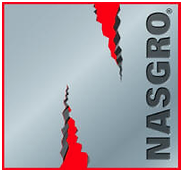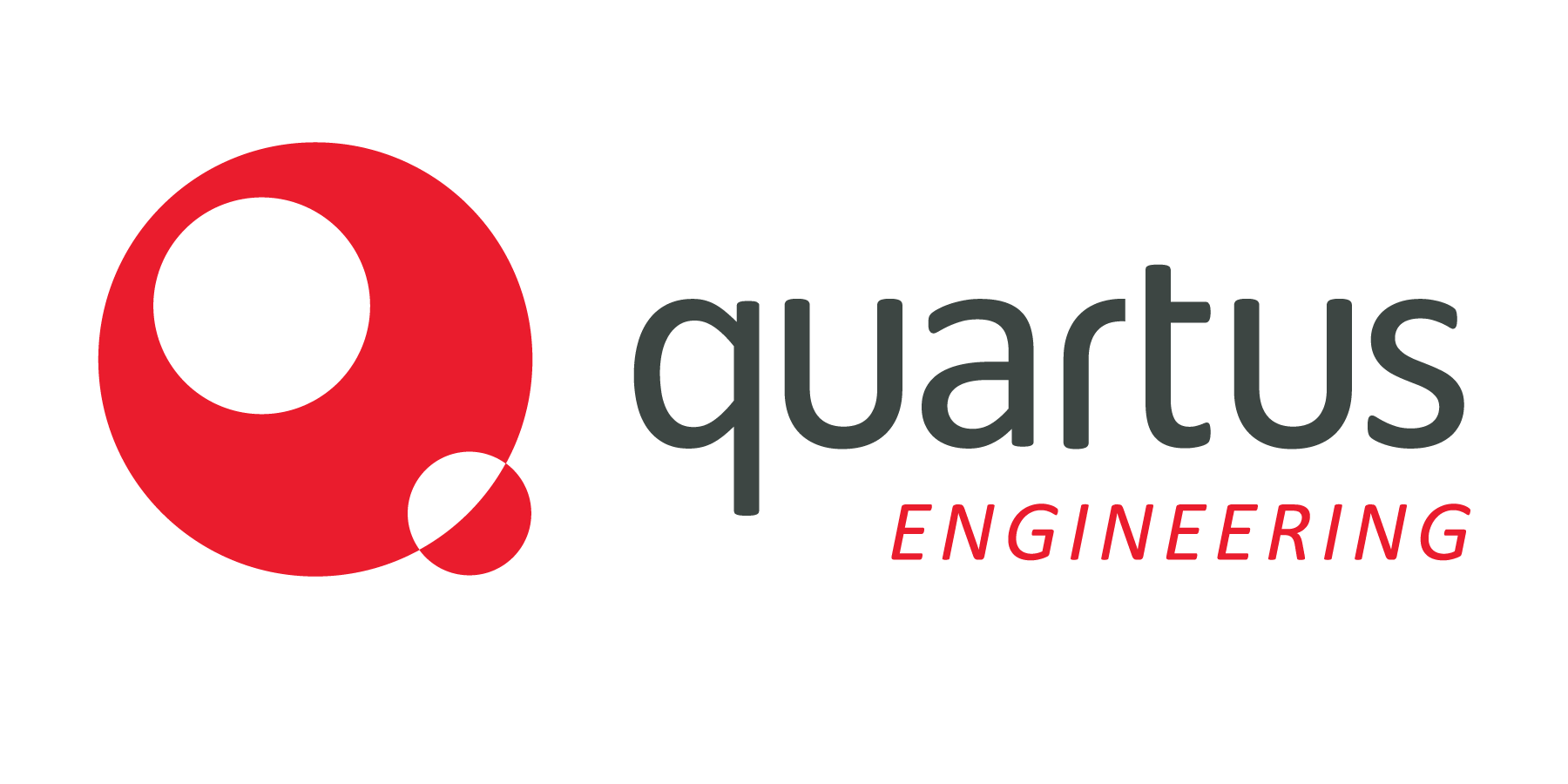Structural Simulation Software.
Quartus has extensive experience with an array of industry-leading software programs to solve our customers’ structural, thermal, and testing challenges. Our best-in-class tools and decades-worth of custom codes allow our engineers to efficiently develop engineering solutions for a wide range of applications.
GENERAL PURPOSE MODELING AND ANALYSIS SOFTWARE
NX Nastran
MSC Nastran
LS Dyna
I-DEAS NX
Abaqus
Hyperworks
Femap
Patran
Ansys Mechanical
Wavesix
DATA ACQUISITION AND ANALYSIS SOFTWARE
LMS Test.Lab
Labview
Zaero
NX Thermal
Star-CCM+
MSC Adams
I-DEAS NX Electronics System Cooling
Mathcad
Matlab
Thermal Desktop and Sinda/Fluint
NCode
Nasgro
CUSTOM
Q-Hydro
Q-DRM
Q-Dynamics
Q-Stop
Custom Femap APIs
Ansys Application Customization Toolkit (ACT)
GENERAL PURPOSE MODELING AND ANALYSIS SOFTWARE
NX NASTRAN
- Linear statics, buckling, and normal modes
- Aeroelastic analysis
- Aeroelastic (flutter and divergence) analysis
- Material and geometric nonlinear analysis
- Vibration analysis (sinusoidal and random)
- Transient and shock analysis
- DMP for efficient analysis of very large models

MSC NASTRAN
- Linear statics, buckling, and normal modes
- Material and geometric nonlinear analysis
- Vibration analysis (sinusoidal and random)
- Transient and shock analysis
- Structural optimization
- Superelement analysis
- Steady-state and transient thermal analysis
- Aeroelastic (flutter and divergence) analysis

LS DYNA
- General purpose transient dynamic analysis
- Explicit time integration
- Large deformations
- General contact-impact algorithms

I-DEAS NX
- Finite element modeling, analysis, and postprocessing
- FE mesh associated to geometry
- Free and mapped meshing
- Linear statics, buckling, and normal modes
- Transient, sinusoidal, and random dynamic analysis
- Thermal analysis
- General postprocessing and animation

ABAQUS
- High-fidelity transient dynamic analysis
- Contact capability for complex conditions
- Fully annealed material states
- Liquid or gas filled structure interaction
- Advanced buckling algorithms

HYPERWORKS
- Finite element modeling and postprocessing
- Very efficient for extremely large models
- OptiStruct for topology optimization
- Import and export to many programs including NASTRAN, DYNA, ABAQUS, and ANSYS

FEMAP
- Finite element modeling and postprocessing
- Parasolid and ACIS geometry
- Free and mapped meshing
- Import and export to many programs including NASTRAN, DYNA, ABAQUS, and ANSYS
- General postprocessing and animation

PATRAN
- Finite element modeling and postprocessing
- Complete integration with MSC.Software’s analysis solvers and third-party solvers
- Robust automatic surface and solid mesh generation
- Advanced mesh-on-mesh capability
- Comprehensive results postprocessing

ANSYS MECHANICAL
- Finite element modeling, analysis, and pre- and post-processing
- Strength analysis – Linear static, Buckling (linear, non-linear)
- Material and geometric nonlinear analysis
- Contact analysis (linear and nonlinear)
- Vibration and motion modeling and analysis
- Composite materials modeling and analysis
- Full Thermal modeling capabilities

WAVE SIX
Software for modeling noise and vibration
- Flow induced noise and vibration
- Broad frequency range
- Finite Elements
- Boundary Elements (BEM)
- Statistical Energy Analysis (SEA)

DATA ACQUISITION AND ANALYSIS SOFTWARE
LMS TEST.LAB
- Modal testing data acquisition
- Multiple input multiple output (MIMO) excitation
- Frequency response function generation
- PolyMAX modal parameter estimation
![]()
LABVIEW
- Digital signal processing
- Real time graphical display
- Sound and vibration analysis
- Modular and scalable signal acquisition
![]()
ZAERO
- Aeroelastic (flutter and divergence) analysis
- Subsonic, transonic, supersonic, and hypersonic
- Automated flutter root tracking
- High-fidelity geometry for stores and nacelles
![]()
NX THERMAL
- Steady-State and transient solutions
- Material nonlinear thermal properties
- Axisymmetric modeling
- Iterative conjugate gradient solver technology
- Fully coupled conduction, radiation and convection heat transfer simulation
- Temperature mapping to FE structural models

STAR-CCM+
- Industry leading computational fluid dynamics (CFD) code
- Compressible (transonic, supersonic, and hypersonic) flow
- Porous, multi-phase, and multi component flows
- Coupled CFD / heat transfer
- Multiphysics (combustion, radiation, aeroacoustics, etc.)

MSC ADAMS
- Multibody dynamics and motion analysis
- Rigid and flexible body dynamics
- Linear and nonlinear simulation of complex, large displacement systems
- Contact, vibration, and durability analysis
- Design optimization
- Integration with FEA (NASTRAN)

I-DEAS NX ELECTRONICS SYSTEM COOLING
- Simulate 3-D air flow and thermal behavior of electronic systems
- Model individual components, multichip modules, heat sinks, PC boards, and complete systems
- General CFD solver including fans and vents
- Integrated finite difference thermal solver

MATHCAD
- Robust, technical computing math software
- Interactive environment integrating computations, plots, and documentation
- Data analysis and visualation

MATLAB
- Matrix manipulation and linear algebra
- Polynomials and interpolation
- Fourier analysis and filtering
- Data analysis and statistics
- Optimization and numerical integration
- Ordinary differential equations (ODEs)
- Sparse matrix operations
![]()
THERMAL DESKTOP AND SINDA/FLUINT
- Scalable thermal model generation
- Capacitance and conductance network analysis models
- Comprehensive finite-difference, lumped parameter modeling of thermal and fluid systems
![]()
NCODE
- Fatigue and durability modeling and analysis
- Finite-element based
- Integrates with FEA tools-NX NASTRAN, MSC NASTRAN, Abaqus
- Stress-life, strain-life, multi-axial, weld analysis
- Integrates and correlates test and CAE data

NASGRO
- Fracture mechanics and fatigue crack growth
- Structural life assessment
- Fatigue crack formation analysis
- Materials and stress intensity factor databases

Custom
Quartus Engineering has developed custom software programs to address specialized analysis requirements.
Q-HYDRO
Q-HYDRO is a program for performing hydroelastic analysis of incompressible fluids in rigid or elastic tanks.
- Completely enclosed
- Free surface including slosh
- Free surface with slosh mass removed
Q-HYDRO is based on the pressure formulation for representing an incompressible fluid. This approach has been shown to be very accurate for liquid propellant launch vehicles, satellite propellant tanks, and other applications.
Q-HYDRO develops input files to create fluid superelements using MSC.NASTRAN and is compatible with the structured solution sequences (SSS).
Q-DRM
Q-DRM is a suite of custom MSC.NASTRAN DMAP alters and related programs for creating data recovery matrices. This data is used for coupled loads analysis of complex systems such as launch vehicles and satellites. Q-DRM has the following features:
- Craig-Bampton stiffness and mass matrices
- Data recovery matrices for accelerations, displacements, element forces, stresses, and interface loads
- Mode acceleration method for accurate displacements and loads
- Compatible with both single level and multi-level superelements
Quartus uses these programs to perform specialty projects. We also sell the programs to our clients. Deliverables include source code, documentation, and example files. On-site training and extended support can also be provided. Please contact us for more information on any of the custom programs or support services.
Q-DYNAMICS
Q-Dynamics is a time and frequency based dynamics analysis toolkit for use in structural dynamics data processing. When coupled with our extensive FEA and testing capabilities this toolbox helps Quartus to quickly understand, compare, and correlate test and simulation responses.
- Complete data processing toolkit from transient data to modal extraction
- Transient investigation tools include: damping calculations, filters, navigational unit transformations, fatigue cycle counting, shock assessments, and more
- Customized add-ons for individual project needs
Used to test and support a wide variety of challenging dynamics projects, including
- Vibration testing and correlation
- Optical performance tests
- Various aircraft and spacecraft modal and life performance tests
- Consumer product qualification and environmental tests
Q-STOP
Q-STOP is a custom optical performance toolkit developed by Quartus for performing Structural-Thermal-Optical-Performance (STOP) analysis of optical components and systems. It works with ZEMAX, NASTRAN, and Abaqus inputs and outputs to perform the following tasks:
- Surface figure error analysis
- Zernike polynomial fitting, residual surface figure error calculation, distortion shape recovery
- Stress birefringence analysis
- Thermo-optic analysis
- Automatic generation of optical performance MPCs (via FEMAP API)
- Frequency & phase-consistent tracking of pointing/boresight
Q-STOP allows Quartus engineers to quickly assess the optical performance of complex optical systems for a variety of mechanical environments.
CUSTOM FEMAP APIS
Quartus has developed a library of hundreds of custom FEMAP APIs (Application Program Interface) to add functionality, automate tasks, and efficiently couple commercial codes (FEMAP, NASTRAN, Matlab, Excel, ZEMAX). Examples of custom APIs include:
- Dynamics toolkit
- Integrates dozens of custom tools for creating and post-processing NASTRAN structural dynamics analyses
- Temperature and pressure mapping
- Meshing and model modification tools
- Composites toolkit
- Fatigue & fracture toolkit
- Post-processing toolkit
Quartus engineers are experts at generating custom APIs to meet internal or customer needs.
ANSYS APPLICATION CUSTOMIZATION TOOLKIT (ACT)
Quartus leverages Ansys ACT to improve internal workflow with a constantly-expanding library of in-house developed modules. Features range from task automation to increasing capabilities of OEM software tools. Custom Ansys ACT capabilities in frequent use include:
- Adding Mechanical APDL features not available in Ansys Mechanical
- Seamless integration with the familiar Ansys Mechanical user interface
- Pre/post-processing tools
- Automatic geometry naming and organization
- Rapid connection generation and modification
- Model checking and verification
- Custom data I/O management and processing
Quartus capabilities go beyond general-use efficiency improvements. Ansys ACT can be utilized to automate an entire workflow from geometry import to report generation. Quartus engineers are experts at developing streamline processes to meet internal or customer needs.
Have a Problem We Can Help Solve?
Lets talk about it
